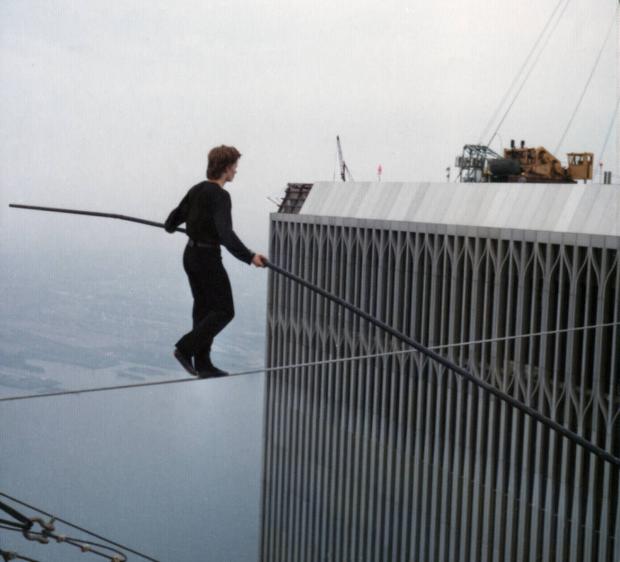Advertisement
On Aug. 7, 1974, a Frenchman named Philippe Petit put on a show that was at once beautiful, dangerous and completely illegal.
With the help of collaborators, he sneaked up to the top of the yet-unfinished World Trade Center and strung a cable between the Twin Towers. Then, as dawn broke, he proceeded to put on a high-wire act a quarter-mile above the streets of New York.
Petit’s stunt was previously examined in a 2008 documentary called Man on Wire. Even if you’re lucky enough to have seen that fascinating flick, you won’t be disappointed by The Walk. Directed and co-written by Robert Zemeckis (Back to the Future, Forrest Gump), it explains just who Petit was and why he was so obsessed with conquering what were then the world’s tallest buildings.
Inevitably, Petit’s biography turns into a thriller of the first order. If you have the slightest fear of heights (and who doesn’t?), your palms will start sweating as soon as the ballsy Frenchman arrives on the South Tower’s 110th floor.
It takes a lot of talented individuals to make a film like this work. First of all, you need a great Petit, and Zemeckis found one in Joseph Gordon-Levitt. Narrating his own tale from atop the Statue of Liberty (an appropriate perch considering it was a gift from Petit’s homeland), Gordon-Levitt’s wire walker is an appealing mixture of charm, arrogance and determination, mixed in with an ingrained distaste for authority.
Indeed, he’s probably more appealing than the real-life Petit, judging from Man on Wire, but that’s not Gordon-Levitt’s fault. Though Zemeckis and co-screenwriter Christopher Browne don’t ignore Petit’s self-centered ego, they largely bypass the schisms it created between him and his collaborators.
Equally impressive is the rest of the cast, starting with Charlotte Le Bon as Annie, his girlfriend and chief supporter, and Ben Kingsley as Papa Rudy, his wire-walking mentor.
Just as important as the cast is the behind-the-camera talent, such as the SFX technicians who make us believe Petit really is walking a wire between two skyscrapers that, tragically, no longer exist. Best of all, the technical trickery is folded seamlessly into cinematographer Dariusz Wolski’s stylish photography.
Scenes of Petit’s early days as a Parisian street performer are depicted in black and white until an onlooker rewards him with a large playing marble that is the only colorful object on the screen. A subsequent switch to color images symbolizes a turning point in Petit’s life, as the marble indirectly leads to his discovery of plans to erect the World Trade Center in New York. From then on, walking between the Twin Towers becomes his dream.
Petit’s tale is told in a breezy style that takes a few shortcuts as it pushes the self-proclaimed artist toward his rendezvous with fame. One of these results in an unconvincing transition.
At an early stage in his high-wire career, he loses his concentration and does a belly flop into a muddy lake. Despite this failure, he immediately starts making plans to wire-walk between the towers of Paris’s Notre-Dame Cathedral. In real life, one suspects, he honed his craft a bit more before attempting such a hazardous feat.
Mostly, though, the movie alternates skillfully between warmhearted storytelling and stomach-churning tension. In the end, it’s also moving. Though The Walk never specifically mentions the Sept. 11, 2001, terrorist attacks that brought down the Twin Towers, it clearly expects viewers to make the connection. That adds a bittersweet aftertaste to Petit’s amazing tale.
Rating: 4 stars (out of 5)
The Walk, rated PG, opens Friday (Oct. 2) in IMAX 3D theaters nationwide. Non-IMAX screenings begin Oct. 9.




